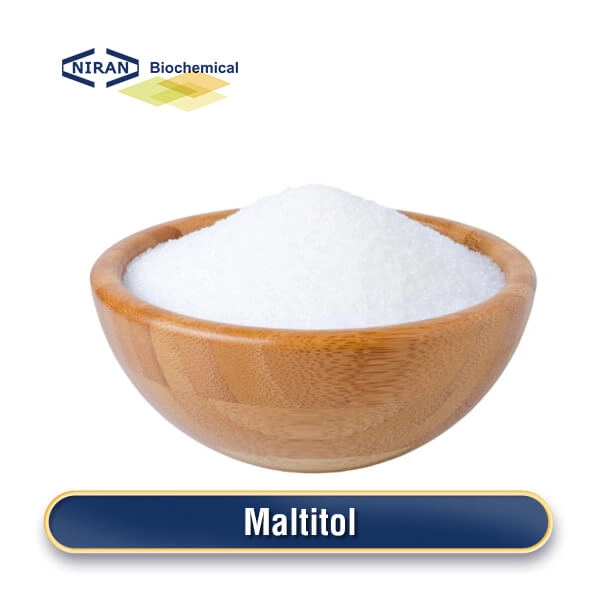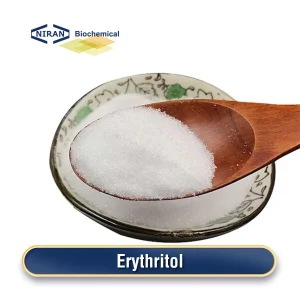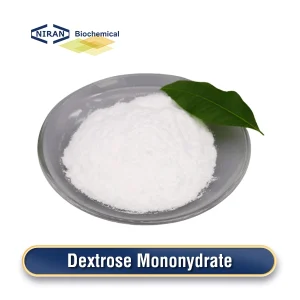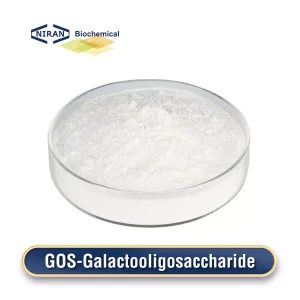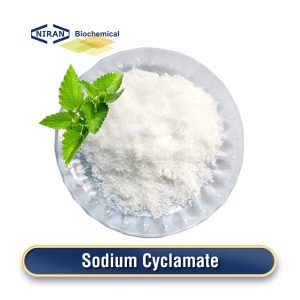Niran Biochemical
YOUR RELIABLE FOOD INGREDIENTS
Send Inquiry
Home » Products » Sweeteners » Maltitol
Maltitol
- CAS: 585-88-6
- Chemical Formula: C12H24O11
- Certification: KOSHER, ISO, HALAL, FSSC22000, BRC, etc.
- Standard: FCC
- MOQ: 1000KG
- Shelf Life: 2 Years
Inquire Product
Product Description
What is Maltitol?
Maltitol, sometimes referred to as hydrogenated maltose, is a novel kind of sweetener that has several advantages over existing sweeteners, including great sweetness, low calorie content, good safety, a very small amount of raw materials needed, an easy manufacturing process, and special qualities not seen in other sweeteners. It is a widely utilized component in the creation of sugar-flavored meals. It dissolves readily in water but more slowly in methanol and ethanol. It appears to be crystalline white powder.
Maltitol uses starch as raw material, and uses α-amylase, β-amylase, and debranching enzyme to hydrolyze starch, degrade macromolecular starch into maltose syrup with maltose as the main component, and then converts maltose syrup into maltitol syrup after hydrogenation reduction. It is then refined through filtration, centrifugation, decolorization and demineralization, and finally a pure maltitol product is obtained through concentration, crystallization and drying, which is suitable for food, medicine and cosmetics.
Related parameters:
| Item | Standard |
| Appearance | White crystals |
| Assay(Maltitol) | 98.0% Min |
| Water content | ≤ 1.0% |
| Reducing Sugars | ≤ 0.1% |
| Melting point℃ | 148-151 |
| Sulphate | ≤ 100 ppm |
| Lead | ≤ 1 ppm |
| Nickel | ≤ 1 ppm |
| Chlorides | ≤ 50 ppm |
| Heavy Metals | ≤ 10 ppm |
Recommended dosage:
| Food name | Maximum usage(g/kg) |
| Carbonated drinks | 5 g/kg |
| Tea drinks | 5 g/kg |
| Fruit drinks | 5 g/kg |
| Yogurt | 5 g/kg |
| Bread | 10 g/kg |
| Cake | 10 g/kg |
| Soy sauce | 3 g/kg |
| Vinegar | 3 g/kg |
| Ham | 5 g/kg |
| Sausage | 5 g/kg |
| Puffed food | 5 g/kg |
| Lactic acid bacteria drinks | 5 g/kg |
Maltitol has a wide range of uses
1. Food industry: Maltitol is widely used in various foods such as candy, chocolate, baked goods, beverages, etc. due to its unique properties. It can provide sweetness, moisturizing and antiseptic properties, and improve the taste and texture of food.
2. Pharmaceutical industry: Maltitol is also used in some medicines and health products, such as diabetic foods, weight loss foods, etc. Its low calorie and low glycemic index characteristics make it a suitable choice for people with specific health needs.
3. Cosmetic industry: Maltitol has good moisturizing properties and is widely used in cosmetics. Its moisturizing properties provide additional value for cosmetics.
4. Improve liver function, prevent tooth decay, lose weight, and stabilize blood sugar: The intake of maltitol can promote the production of glycogen, repair damaged liver cells, and improve liver function. At the same time, it contains low sugar content, which can promote the secretion of saliva, clean the mouth, and prevent the formation of tooth decay and dental plaque. In addition, maltitol can also reduce the fat content in the body, speed up the body’s metabolic function, and help lose weight. Finally, maltitol is metabolized slowly in the body and can effectively and steadily control blood sugar.
5. As a food additive: As a food additive, maltitol liquid has the main functions of improving taste, replenishing energy, relieving hypoglycemia symptoms, promoting gastrointestinal motility, and improving appetite. A lot of cakes, ice cream, candies, and other meals are made using it. Moderate consumption can improve the taste of food and increase appetite.
6. Application in sugar-free cold drinks and dairy products: Maltitol can be used as a sugar-free sweetener in functional yogurt products, sugar-free ice cream, ice cream and sugar-free fruit juice ice water to improve taste, flavor and sweetness. It can also lower the freezing point of water, making ice cream and other foods more supple and fluffy at a given temperature.
User asked question:
Q: What makes xylitol and maltitol different from one another?
A: 1. Various sources: Xylitol is a naturally occurring sweetener that is taken from plant materials such maize cobs, oak, and birch. In nature, xylitol is found in a wide range of fruits, vegetables, and grains, but its concentration is not very high.
2. Different properties: Maltitol is obtained by hydrogenating maltose and was used as a low-calorie sweetener in the early days. Xylitol has physiological characteristics such as low calories, indigestion, and no caries.
3.Different effects: Maltitol is non-corrosive, does not stimulate the secretion of insulin, can inhibit excessive accumulation of fat in the body, and is difficult to digest. However, maltitol is easily soluble in water and is not easily used by mold, yeast and lactic acid bacteria. For diabetic patients, xylitol can be used as a dietary supplement, sweetener, and supplemental therapy.
It can also help patients with liver disease avoid fatty liver by enhancing liver function and encouraging the synthesis of glycogen in the liver.
Q: What are the advantages of maltitol over stevia?
A: In terms of taste and flavor, the sweetness of maltitol is closer to sucrose, with pure sweetness, no bitterness or aftertaste, which makes it more acceptable to consumers in many foods.
Although stevia is sweet, some varieties may have bitter or medicinal taste, and the taste is not as natural as maltitol.
Secondly, maltitol is widely used in a variety of foods such as baking, candy, dairy products, beverages, etc., and has good moisture retention and anti-crystallization properties, which can improve the texture and shelf life of food. Stevia has relatively poor thermal stability and solubility, and may not be as stable as maltitol in some food processing processes.
Next, although maltitol has calories, its metabolic pathway is different from sucrose, and its glycemic index is lower, which is more suitable for diabetic patients and people who need to control blood sugar. Stevia has almost no calories and is a non-nutritive sweetener, but its metabolic pathway is completely different. When it comes to calorie management, each has pros and cons of its own.
Finally, maltitol can effectively improve the taste and texture of food, increase the moistness and softness of the product, and is particularly suitable for baking and candy products. Stevia might need to be combined with other sweeteners in some applications in order to cover up any potential bitterness and strange flavor.

